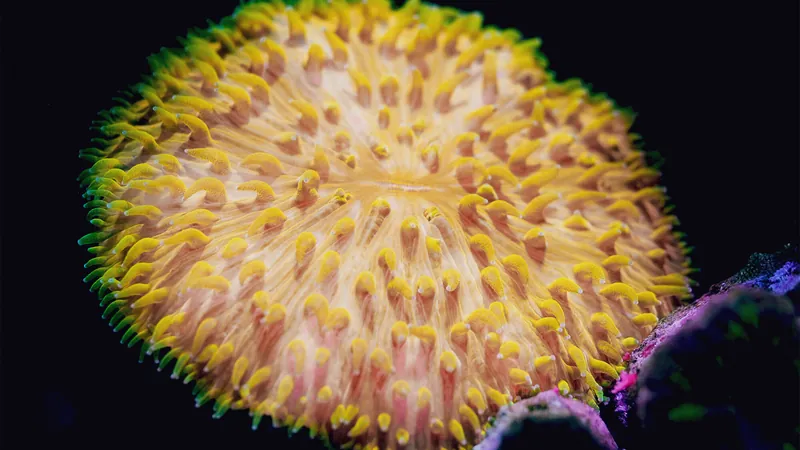
Float Like a Jellyfish: Groundbreaking Discovery in Coral Mobility Unveiled
2025-01-22
Author: Mei
Research Overview
A fascinating new research study from the Queensland University of Technology reveals intriguing insights into how certain free-living corals, defying traditional movement advice, navigate towards light during migration.
Led by Dr. Brett Lewis from the School of Atmospheric and Earth Sciences, this cutting-edge study published in PLOS One sheds light on the mobility mechanisms of the mushroom coral Cycloseris cyclolites.
Coral Mobility and Lifestyle
Not all corals are stationary; some, like the charming Cycloseris cyclolites, have a solitary and mobile lifestyle that allows them to seek out ideal habitats, particularly in search of optimal lighting conditions.
Dr. Lewis emphasized that the dynamics of movement and navigation in these free-living corals are relatively unexplored, making this research a pivotal step forward.
Pulsed Inflation Mechanism
Utilizing advanced high-resolution time-lapse imaging, the research team discovered that Cycloseris cyclolites employs a unique method known as pulsed inflation.
This innovative mechanism involves rhythmic inflation and deflation of the coral's tissue, propelling it similar to how jellyfish move through the water.
This newfound mobility strategy not only supports migration but also aids in self-righting when flipped upside down and in sediment rejection during storms.
Light Preference
In a noteworthy revelation, the study found that Cycloseris cyclolites has a striking preference for blue light, with a whopping 86.7% of the corals gravitating towards blue light sources compared to only 20% preferring white light.
This affinity for blue light corresponds to their habitat needs, particularly in deeper waters where blue wavelengths prevail, and is crucial for their survival, reproduction, and dispersal.
Neurological Sophistication
What stands out is the suggestion that these corals, once thought to be simple organisms, exhibit a level of neurological sophistication akin to jellyfish.
This intriguing parallel raises exciting questions about the evolutionary relationship between corals and other marine species, prompting a deeper exploration into their neurological frameworks.
Ecological Implications
Dr. Lewis pointed out the vital ecological implications stemming from this research.
By understanding how migratory corals move and react to environmental conditions, scientists can better predict how these organisms might adapt to shifting marine conditions, particularly the challenges posed by climate change.
As sea surface temperatures fluctuate and habitats shift, the speed at which corals can migrate becomes increasingly vital for their survival.
Call to Action
This groundbreaking study is a wake-up call for the ecological community.
As climate-driven changes accelerate, the survivability of corals like Cycloseris cyclolites hinges on their ability to rapidly migrate towards more suitable environments.
Understanding these mechanisms not only highlights the resilience of such species but could also guide future restoration efforts in coral reef ecosystems.
Coral reefs, vital to marine biodiversity and coastal protection, need urgent attention. The more we learn about their adaptive strategies, the better equipped we will be to ensure their survival for generations to come.


 Brasil (PT)
Brasil (PT)
 Canada (EN)
Canada (EN)
 Chile (ES)
Chile (ES)
 Česko (CS)
Česko (CS)
 대한민국 (KO)
대한민국 (KO)
 España (ES)
España (ES)
 France (FR)
France (FR)
 Hong Kong (EN)
Hong Kong (EN)
 Italia (IT)
Italia (IT)
 日本 (JA)
日本 (JA)
 Magyarország (HU)
Magyarország (HU)
 Norge (NO)
Norge (NO)
 Polska (PL)
Polska (PL)
 Schweiz (DE)
Schweiz (DE)
 Singapore (EN)
Singapore (EN)
 Sverige (SV)
Sverige (SV)
 Suomi (FI)
Suomi (FI)
 Türkiye (TR)
Türkiye (TR)
 الإمارات العربية المتحدة (AR)
الإمارات العربية المتحدة (AR)